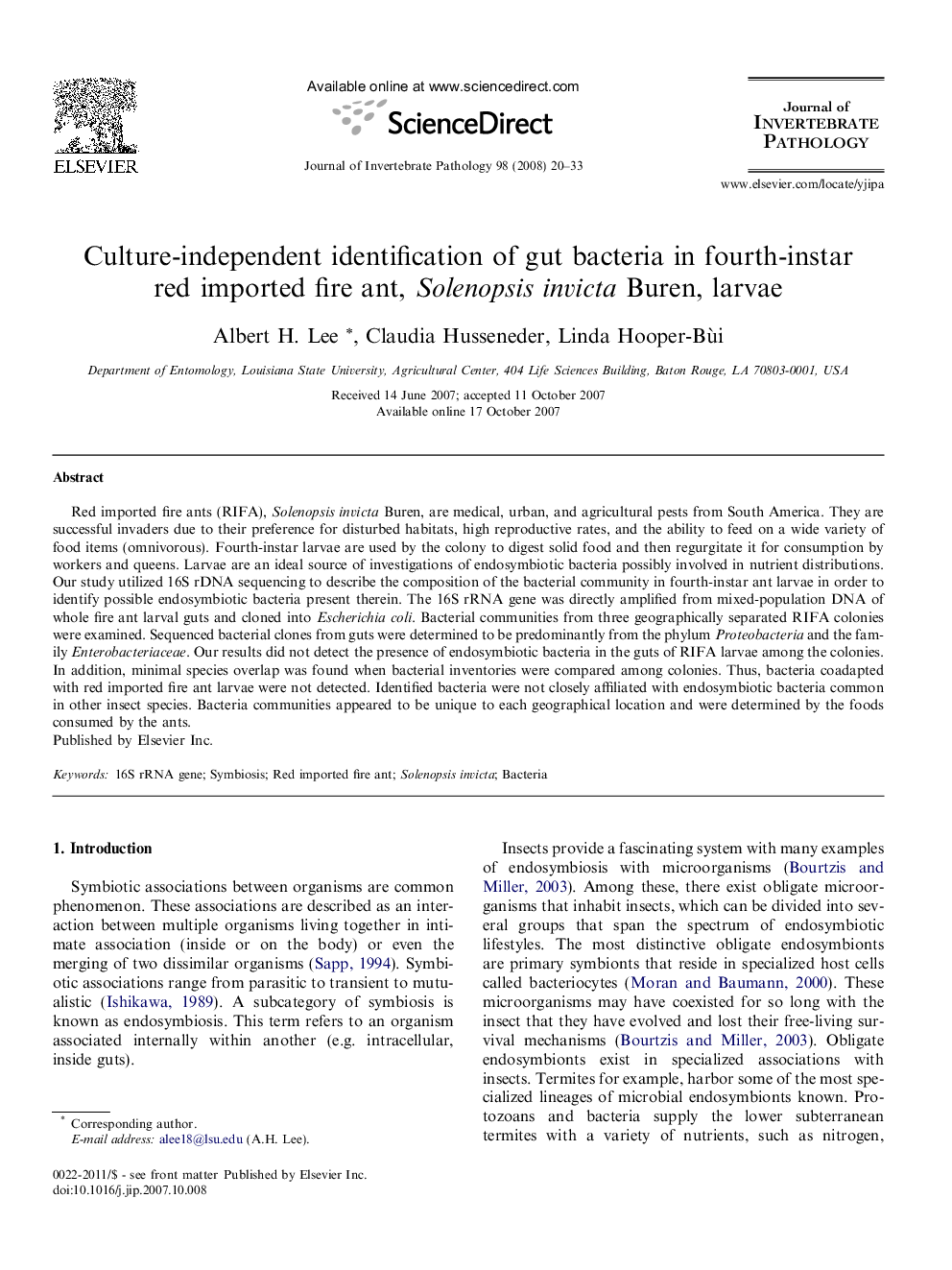| Article ID | Journal | Published Year | Pages | File Type |
|---|---|---|---|---|
| 4558489 | Journal of Invertebrate Pathology | 2008 | 14 Pages |
Red imported fire ants (RIFA), Solenopsis invicta Buren, are medical, urban, and agricultural pests from South America. They are successful invaders due to their preference for disturbed habitats, high reproductive rates, and the ability to feed on a wide variety of food items (omnivorous). Fourth-instar larvae are used by the colony to digest solid food and then regurgitate it for consumption by workers and queens. Larvae are an ideal source of investigations of endosymbiotic bacteria possibly involved in nutrient distributions. Our study utilized 16S rDNA sequencing to describe the composition of the bacterial community in fourth-instar ant larvae in order to identify possible endosymbiotic bacteria present therein. The 16S rRNA gene was directly amplified from mixed-population DNA of whole fire ant larval guts and cloned into Escherichia coli. Bacterial communities from three geographically separated RIFA colonies were examined. Sequenced bacterial clones from guts were determined to be predominantly from the phylum Proteobacteria and the family Enterobacteriaceae. Our results did not detect the presence of endosymbiotic bacteria in the guts of RIFA larvae among the colonies. In addition, minimal species overlap was found when bacterial inventories were compared among colonies. Thus, bacteria coadapted with red imported fire ant larvae were not detected. Identified bacteria were not closely affiliated with endosymbiotic bacteria common in other insect species. Bacteria communities appeared to be unique to each geographical location and were determined by the foods consumed by the ants.
